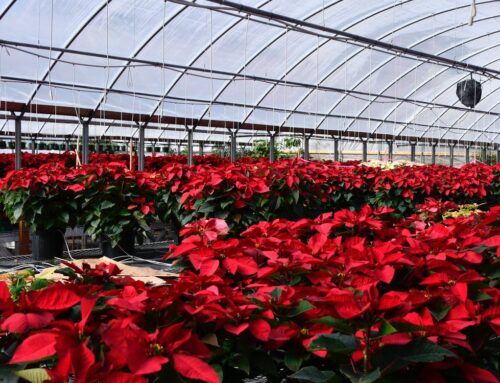With Halloween right around the corner, we reached out to our plant experts at Bethany Farm and Nursery to find some of the spookiest flowers to decorate our haunted homes with.
Double, Double toil, trouble; Fire burn and Cauldron Bubble, these plants are said to have been used in bubbling potions to repel Werewolves during full moons, and give Witches Brooms their Mystical power of flight!
On All Hallows Eve, there are spookier things lurking in our gardens than the neighborhood Ghosts and Ghouls. If Michael Myers had a garden- here are some plants we think he’d grow.
Witch Hazel
It is a large deciduous shrub with colorful flowers. If touched, Witch Hazel can leave a strange tingling sensation. The spookiest part- it blooms and thrives around Halloween! We do warn you to watch out for this plant- when these blooms open they spew out small black seeds up to 30 feet to try and take over and pollinate the surrounding area! Witch Hazel also is suspiciously resistant to most pests and diseases, almost like someone cast a protective spell on it.
Black Bat Flower
The Black Bat Flower, also known as the Devil’s Whiskers has deep purplish-black flowers that resemble a flying bat. These plants are known to be extremely poisonous and can grow to be quite large. The locals warn people visiting the jungle to avoid looking into the plants lifelike ‘eyes’ to avoid a curse by the Devil himself! But don’t worry- you probably won’t run into the beautiful Black Bat Flower here, it can be found in the dense and dark jungles of Southeast Asia.
Wolfsbane
Also known as the Devil’s helmet, it is an extremely poisonous perennial that blooms around Halloween. This plant is known to ward off Werewolves during the full-moon, and in the 1931 Classic Dracula, Wolfsbane replaces garlic as a vampire repellent. With the right ingredients… and cauldron, Wolfsbane is the secret ingredient that’s been said to help witches fly on their birch brooms Halloween night.
Hydnellum Peckii
Also known as Hydnellum Peckii, this creepy fungus looks as though it’s survived Friday the 13th. This fungus emits an unpleasant odor to keep predators away (as if its looks don’t already scream run). This fungus also thrives on a radioactive isotope that has proven to be toxic in some cases. We’ll make sure to run in the opposite direction if we see this Thing From Another World.
Monotropa Uniflora
The Ghost Plant is also known as Monotropa Uniflora, and it grows in the deepest and darkest parts of the forest. The Ghost plant does not have chlorophyll, which means it does not need the sun to synthesize and grow. This spooky plant thrives on darkness, and is considered a parasite! It feeds off surrounding fungi and trees, stealing their nutrients until they’re strong enough to release tens of thousands of seeds into the wind to be pollinated elsewhere. These look like they could be tastefully placed in a vase in The Last House on The Left. Author, Emily Dickinson had a special relationship with this bewildering parasitic plant, writing poems about its eerie beauty.
Devils Claw
The Devils Claw plant is so brilliant, it’s almost like it has a mind of its own. When the fruit from this plant dries in its sunny climate, the fruit splits open creating large, sharp, hook-like claws. These claws latch onto prey walking by, allowing it to spread its seeds and pollinate easily, and without the victim knowing they’re spreading this Devilish plant. It looks like a scene from the Night of the Living Dead!
Belladonna
Deadly Nightshade is also known as Belladonna. In Italian Belladonna translates to beautiful lady, and beauty is the curse of this plant. Belladonna grows sweet, red berries, which were believed to bring beauty to those who used them in special concoctions (aka potions). It’s been said that women who brought offerings to the plant deep in the forest were given all the beauty they’ve ever wanted. Belladonna was a common medieval poison and has killed many Kings, Emperors, and evil rulers. Stay far away from Nightshade, and hope the ghosts of Kings & Emperors past will stay far away from you too.


Leave A Comment